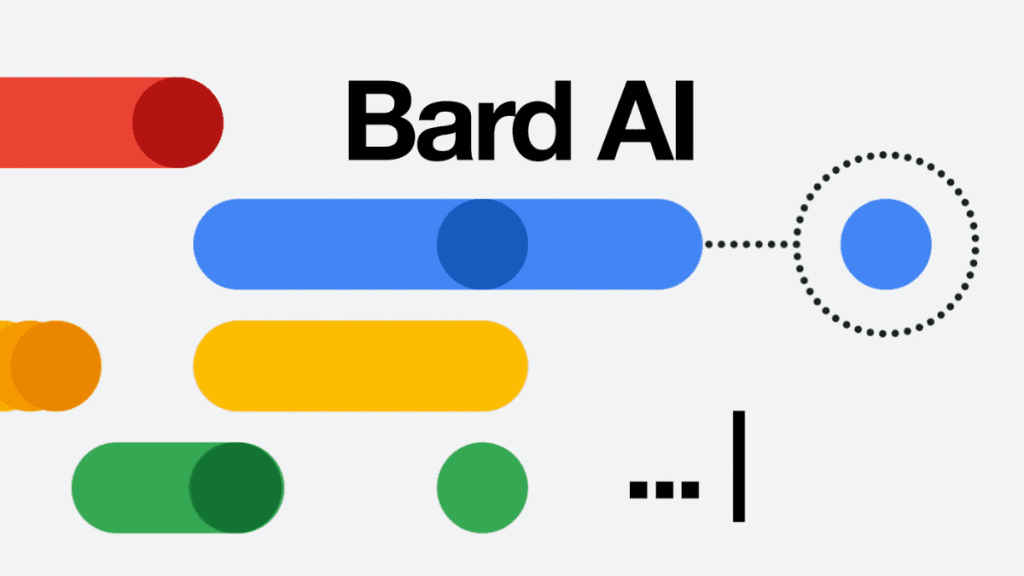From BERT to BARD
Recent advancements in artificial intelligence and natural language processing (NLP) have propelled the development of sophisticated language models. These models aim to understand and generate human-like text, revolutionising various applications and interactions with technology. One of the most prominent language models in this domain is Google’s Bidirectional Encoder Representations from Transformers (BERT). Building upon the success of BERT, Google introduced a more powerful language model called Bard. In this article, we will delve into what Google Bard is, how it works, and the potential implications it holds.
The Need for Advanced Language Models
The ability to generate human-like text is crucial in enabling seamless interactions between humans and machines. Traditional language models faced limitations in comprehending human language’s context, nuances, and subtleties. However, with advancements in AI and NLP, more sophisticated language models like Bard have emerged, offering enhanced capabilities in language understanding and generation.
Understanding Google Bard
Google Bard is an advanced language model that represents a noticeable advancement in the field of natural language processing (NLP). It is built upon the success of its predecessor, BERT, and incorporates more sophisticated techniques to achieve a deeper understanding of language.
At its core, Bard utilizes a variant of the Transformer architecture, which allows it to process text in a bidirectional manner. This means that it considers both preceding and succeeding words when analyzing a particular word or phrase. By capturing the contextual dependencies between words, Bard can generate more accurate and contextually relevant responses.

The training process for Bard involves two main steps: pre-training and fine-tuning. During pre-training, Bard learns to predict missing words in a given sentence by training on a vast corpus of publicly available text from the internet. This helps Bard acquire a broad understanding of language and context.
After pre-training, Bard goes through a fine-tuning process. It is trained on specific tasks using carefully crafted datasets that are created by human reviewers following Google’s guidelines. This fine-tuning aligns Bard’s responses with Google’s quality standards and ethical guidelines, ensuring that it provides helpful and unbiased information to users.
Bard’s contextual understanding and advanced language processing capabilities have significant implications across various domains. From improving search engine results to enabling more natural language interfaces and assisting with content generation and language translation, Bard’s potential applications are vast. As Google continues to refine and enhance Bard’s abilities, we can anticipate further advancements in the field of NLP and more sophisticated interactions with AI-powered systems.
(Source/ Searching in Bard)
Google Bard: The Transformer Architecture and Contextual Understanding
Bard is based on a variant of the Transformer architecture, which has been highly influential in the field of NLP. This architecture allows Bard to process text bi-directionally, capturing the contextual dependencies of words and phrases. By considering both preceding and succeeding words, Bard can grasp the nuanced meanings and context of individual words, resulting in more accurate and contextually relevant responses.
The Training Process: Pre-training and Fine-tuning
To develop its language understanding capabilities, Bard undergoes a two-step training process: pre-training and fine-tuning. During pre-training, Bard is exposed to a large corpus of publicly available text from the internet. It learns to predict missing words in a given sentence, enabling it to develop a broad understanding of language and context. This pre-training phase equips Bard with a wealth of knowledge about various topics and domains.
Following pre-training, Bard enters the fine-tuning phase. In this stage, it is trained on specific tasks using carefully curated datasets created by human reviewers. These reviewers follow guidelines provided by Google to align Bard’s responses with the company’s quality standards and ethical considerations. The fine-tuning process ensures that Bard generates responses that are helpful, unbiased, and of high quality.
Google Bard: Implications and Applications
Google Bard has significant implications across various domains and applications. Here are a few notable areas where Bard’s advanced language processing capabilities can make a difference:
1. Improved Search Engine Results
Bard’s contextual understanding can enhance search engine algorithms, enabling more accurate interpretation of search queries and delivering more relevant search results to users.
2. Natural Language Interfaces
Bard can power more natural and conversational interactions with technology. It can be integrated into voice assistants, chatbots, and virtual agents, offering human-like responses and creating a more intuitive user experience.
3. Content Generation and Summarization
Bard’s language generation abilities can assist content creators by automating tasks such as drafting emails, writing reports, and generating product descriptions. It can also summarize lengthy articles or documents, saving time and effort.
4. Language Translation and Understanding
Bard’s contextual understanding enables it to significantly improve machine translation systems. By considering the context and nuances of the source text, Bard can generate more accurate translations and enhance cross-lingual communication.
Bottomline: Google Bard is Worth Trying
Google Bard represents a significant advancement in the field of language modelling and natural language processing. With its contextual understanding and advanced language generation capabilities, Bard opens up new possibilities for improved search engine results, natural language interfaces, content generation, and language translation. As Google continues to refine and enhance Bard’s abilities, we can anticipate even more impressive applications that further enrich our interactions with technology.
FAQs (Frequently Asked Questions)
1. What makes Google Bard different from previous language models?
Google Bard builds upon the success of BERT and incorporates more advanced techniques in natural language processing. It excels in contextual understanding, allowing it to generate more accurate and contextually relevant responses.
2. How is Bard trained?
Bard undergoes a two-step training process. It begins with pre-training on a large corpus of publicly available text from the internet. This phase helps Bard acquire a broad understanding of language. After pre-training, Bard is fine-tuned on specific tasks using carefully crafted datasets provided by human reviewers.
3. Can Bard understand multiple languages?
Yes, Bard has the ability to understand multiple languages. It can be trained on diverse datasets to develop proficiency in different languages and improve its language translation capabilities.
4. Is Bard limited to text-based applications?
No, Bard can be applied to various forms of communication, including text-based applications, voice assistants, and chatbots. Its advanced language understanding capabilities make it suitable for a wide range of NLP tasks.
5. How does Bard handle controversial or sensitive topics?
Bard’s fine-tuning process involves clear guidelines for human reviewers to follow. These guidelines ensure that Bard provides helpful and unbiased responses while avoiding controversial or sensitive topics. Google is committed to maintaining ethical standards and continuously improves its systems to avoid biases.


